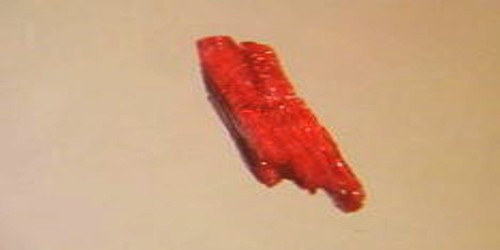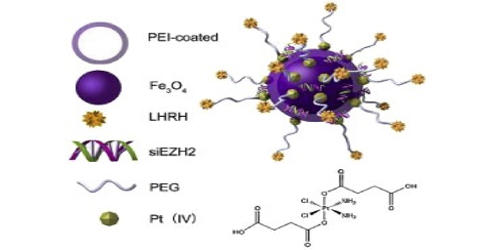Abelsonite is accompanied by its structural norisomer; the surrounding shale contains other Ni porphyrins, which represent a series of more extended homologues.
The mineral Abelsonite was first seen on fracture surfaces in oil shales in the Green River Formation, located in eastern Uintah County, Utah in the year 1975. It is a nickel porphyrin derivative, and it was named after an American physicist, Philip Hauge Abelson.
Abelsonite is semitransparent and pink-purple, dark greyish purple, pale purplish red, or reddish brown in color. The mineral occurs as thin laths or plates or small aggregates up to 1 cm (0.39 in). The mineral is soluble in benzene and acetone and is insoluble in water, dilute hydrochloric acid, and dilute nitric acid.

How to Identify Abelsonite
Abelsonite can be identified in hand specimens, and in the field using the following unique properties: It is pinkish-red, purple, or reddish-brown in color, and it is translucent. It is often found as fragile clusters of crystals, which can be easily deformed, and are non-fluorescent.
It has a sub-metallic lustre, with a density of 1.45 and a hardness of 2 to 2.5 on the Moh Scale.
In summary:
- Optical properties: Biaxial
- Mohs scale hardness: 2–3
- Cleavage: Probable on
- Formula (repeating unit): C31H32N4Ni
- Luster: Adamantine, sub-metallic
- Crystal system: Triclinic; Unknown space group
- Streak: Pink
Physical Properties of Abelsonite
- Cleavage: Cleavage:{111} Good
- Color: Pinkish red, Purple, Reddish brown.
- Density: Density: 1.45
- Diaphaneity: Translucent
- Fracture: Fragile – Crystals with a delicate and easily injured structure.
- Habit: Aggregates – Made of numerous individual crystals or clusters.
- Habit: Platy – Sheet forms (e.g. micas).
- Hardness: 2-2.5 – Gypsum-Finger Nail
- Luminescence: Non-fluorescent.
- Luster: Sub Metallic

Chemical Properties of Abelsonite
- Formula: Ni(C31H31N4)
- IMA Formula: NiC31H32N4
- Elements listed: C, H, N, Ni – search for minerals with similar chemistry
Information Source:
















